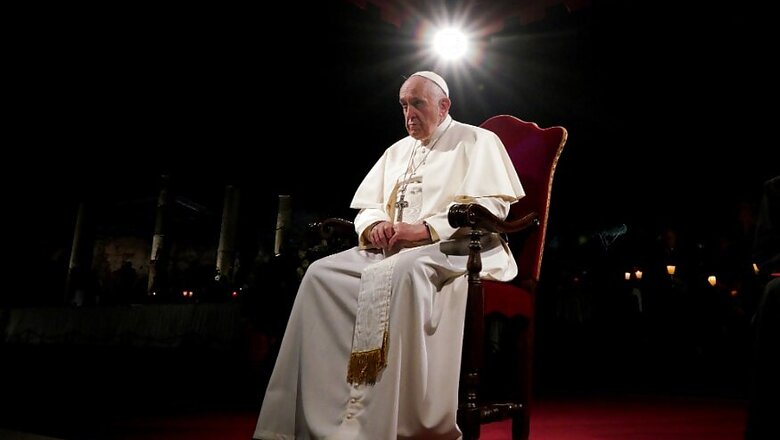
views
Kerala, where the gods of many redemptions and revolutions are ever present, will become a Holy Land as well with its fourth Saint and India's sixth, Mother Mariam Thresia, being canonised by Pope Francis on October 13.
Thresia, who lived and worked in Thrissur in central Kerala, is in elite company. Among the four being given the sainthood is also Cardinal John Newman, who was a Calvinist and once considered the Pope “anti-Christ” and later turned Catholic. Newman was also a great poet and wrote the pivotal, immortal song of all Christianity — ‘Lead kindly light, amid the encircling gloom, lead thou me on!’ Newman’s canonisation is considered so important in Britain that Prince Charles is leading the British delegation for the grand event in St’ Peter’s in Vatican.
The other three being canonised are Marguerite Bays, a 19th century Swiss laywoman and Stigmatist; Mother Giuseppina Vannini, a 19th century Rome nun; and Sister Dulce Lopes, who will be Brazil’s first woman saint compared to Kerala’s third. Other woman saints that Kerala has are Sister Alphonsa (1910-1946) and Sister Euphrasia Elavathigal (1877-1952). Kerala is seen as such a divine state by the Vatican that 27 other nuns and priests are also in the assembly line for sainthood, according to a document of the Kerala Bishop’s council.
According to the Catholic Herald, the official publication of the church, “Thresia’s prayer life was characterised by frequent ecstasies in which she would sometime levitate about the ground. In 1909, Thresia received the stigmata (sign of Christ’s crucifixion wound on the hand) after which she suffered from demonic attacks.”
But what has gained Thresia the sainthood is not her ability to levitate, but the “proof” of a dying child regaining life after a relic of Thresia was placed on the child’s heart. Sainthood is granted only after at least one miracle attributed to the nun is checked out and sanctified by Vatican committees.
Francis has been on a canonisation spree and has so far conferred the saint tag on 838 Catholics who are believed to possess the power of miracle cure. This is part of his effort to popularise the Catholic church, which has been losing followers all over Europe with churches running empty on Sundays. This is part of the general trend; for the more advanced a nation gets, the more it turns toward science and atheism.
Having experienced the miracles of technology, many feel religion is a waste of time and offers no solutions. A survey of 65 countries by Gallup International and others shows that in China, 90% are atheist (also the official policy). Three-fourths of all Swedes and Czech have no religion and neither do 66% of Brits. The Catholic Church, meanwhile, claims a membership of 1.9 billion.
Kerala has bucked this global trend since the three major religions have been growing in the state that is the most advanced socially. Science, religion and communism go hand in hand and it is into this medley of thriving philosophies that the fourth saint is now being planted in the hope that they will do the ultimate miracle: increasing the number of believers in Kerala who will fill up the pews. Kerala is also the major supplier of nuns and priests to the Vatican and many senior priests have been accused of “nun-running”.
All this is happening at a time when the Syro-Malabar faction of the church is up in arms against its senior-most bishop for dubious land deals. One bishop and some priests are undergoing trial in Kerala for the rape of nuns. Pope Francis has announced a zero-tolerance policy towards sexual complaints against priests.
In all Catholic churches the world over, the bells will ring at the time when the canonisation happens. In Kerala, which is eternally looking for miracles to happen, these church bells will reverberate even more.
(The author is a senior journalist. Views expressed are personal)















Comments
0 comment